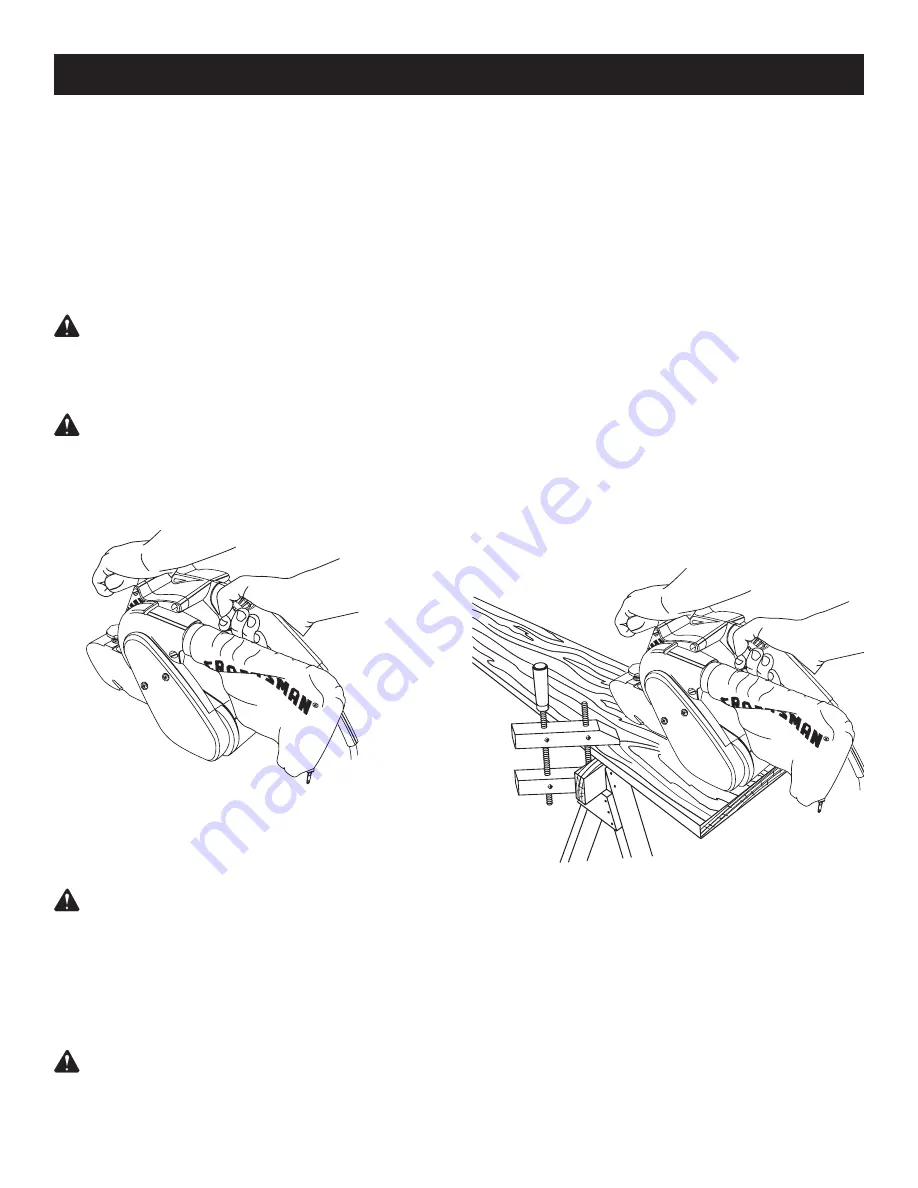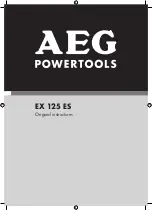
13
n
Move the sander slowly over the work surface, using
the rear handle to control the sander and the front
handle to guide the sander.
NOTE:
Allowing the sander to remain in one place will
result in an uneven surface.
The sander is designed to provide the proper weight on
the sanding belt.
If the sanding belt slips or does not track while sanding,
you may be applying too much pressure.
Excessive pressure will result in uneven work, clogged
sanding belts, premature sanding belt wear, possible
motor burnout, and irregular sanding belt tracking
When this occurs, remove the sander from the workpiece.
If you properly adjust the belt tracking, the sanding belt
will return to its normal and correct position on the drive
roller and front roller.
Use a coarser sanding belt for heavy sanding, not heavy
pressure. The weight of the tool is sufficient to provide
adequate pressure at the correct location.
The front roller of the sander is not designed for contour
sanding. Sanding on the front roller could cause
irregularity in the sanding belt tracking.
OPERATING THE SANDER
See Figure 10.
n
Secure the work to prevent it from moving under the
sander.
WARNING:
Unsecured work could be thrown
towards the operator causing injury.
n
Turn the sander on and let the motor reach its
maximum speed before placing the sander on the work
surface.
n
Lower the sander to the work surface with a slight
forward motion.
WARNING:
Keep a firm grip on the sander with
both hands at all times. Failure to do so could result
in loss of control leading to possible serious injury.
PROPER HAND PLACEMENT
See Figure 9.
For ease of operation and maintaining proper control,
the sander has a front handle and a rear handle. These
handles allow two-handed operation, which aids in
maintaining control, keeping the sanding area level with
the workpiece, and keeping hands clear of the sanding
belt. When operating the sander, always hold the front
handle with your left hand and the rear handle with your
right hand.
WARNING:
Keep hands and fingers clear of
moving sanding belt, front idler roller, and drive
roller assembly. Failure to do so will result in serious
personal injury.
WARNING:
Do not let your fingers rest over the
front or right edge of the sander. If the sanding belt
were to run off, or if it were not properly adjusted,
your fingers could come in contact with the moving
sanding belt resulting in possible serious injury.
OPERATION
Fig. 10
Fig. 9


































